¡Inscríbete ya! ¡Nuevas convocatorias de diplomas de español DELE 2021 disponibles!

Los Diplomas de español DELE son títulos oficiales, acreditativos del grado de competencia y dominio del idioma español, que otorga el Instituto Cervantes en nombre del Ministerio de Educación y Formación Profesional y Ministerio de Exteriores, Unión Europea y Cooperación de España.
Los exámenes DELE están diseñados siguiendo las directrices del Marco común europeo de referencia (MCER) del Consejo de Europa.
Nuevas convocatorias de los Diplomas de español DELE 2021 en el Instituto Cervantes de Londres en mayo, julio, septiembre y noviembre
- 21 mayo (examen oral y escrito). DELE Escolar: Niveles A1 y A2/B1
Plazo de inscripción: hasta el 10 de marzo - 22 mayo (examen escrito), 21/22 de mayo (examen oral). Niveles: A1, A2, B1, B2, C1, C2*
Plazo de inscripción: hasta el 10 de marzo - 9 de julio (examen escrito), 9/10 de julio (examen oral). Niveles: A2, B1, B2, C1*
Plazo de inscripción: hasta el 5 de mayo - 10 de septiembre (examen oral y escrito). Nivel A2
Plazo de inscripción: hasta el 7 de julio - 12 de noviembre (examen oral y escrito). DELE Escolar: Niveles A1 y A2/B1
Plazo de inscripción: hasta el 29 de septiembre - 13 de noviembre (examen escrito)
- 12/13 noviembre (examen oral). Niveles: A1, A2, B1, B2, C1, C2*
Plazo de inscripción: hasta el 29 de septiembre
*Por favor, tenga en cuenta que es posible que el examen oral no sea el mismo día que el escrito
Para más información, visite nuestra web.
Enrol now! New 2021 DELE Spanish exam sessions available!
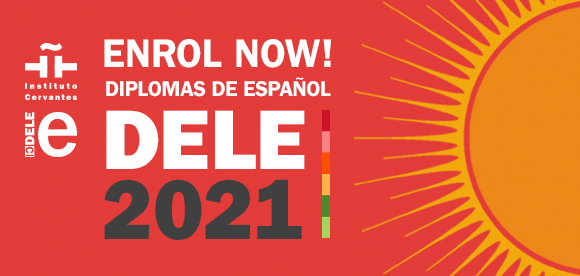
The DELE Spanish Diplomas are official qualifications certifying the degree of competence and mastery of Spanish, granted by Instituto Cervantes on behalf of Ministry of Education and Vocational Training of Spain and, Ministry of Foreign Affairs, European Unión and Cooperation of Spain.
The DELE examinations have been designed following the guidelines of the Common European Framework of Reference for Languages (CEFR) of the Council of Europe.
DELE 2021 exam sessions in May, July, September and November at Instituto Cervantes in London.
- 21 May (written and oral exam). DELE for Young Learners: Levels A1 and A2/B1
Registration deadline: 10 March - 22 May (written exam), 21/22 May (oral exam). Levels: A1, A2, B1, B2, C1, C2*
Registration deadline: 10 March - 9 July (written exam), 9/10 July (oral exam). Levels: A2, B1, B2, C1*
Registration deadline: 5 May - 10 September (written and oral exam). Level: A2
Registration deadline: 7 July - 12 November (written and oral exam): DELE for Young Learners: Levels A1 and A2/B1
Registration deadline: 29 September - 13 November (written exam), 12/13 November (oral exam). Levels: A1, A2, B1, B2, C1, C2*
Registration deadline: 29 September
*Please note that the oral and written exams may not take place on the same day
For more information, visit our website.
FIVER CERVANTES. Festival de cine, danza y nuevos medios
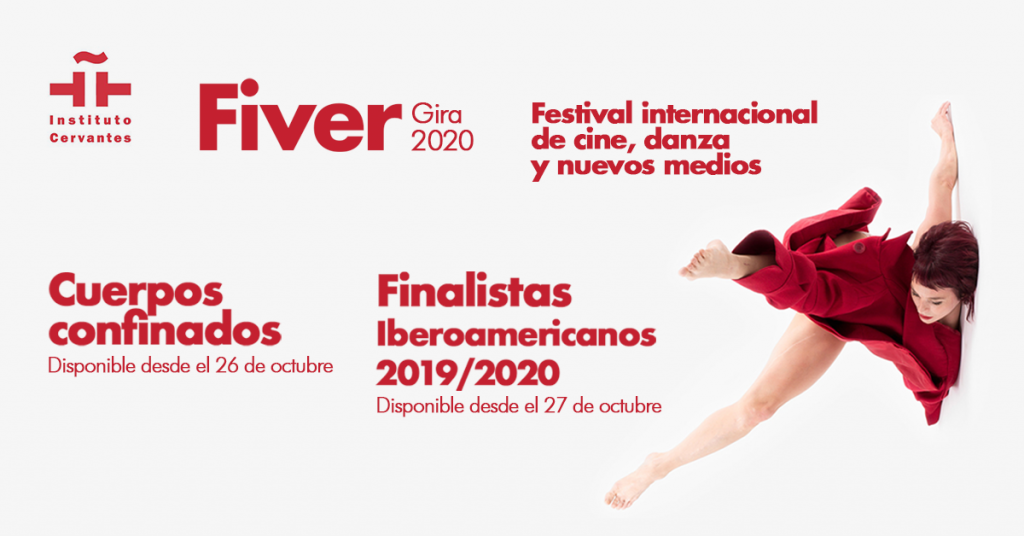
FIVER, festival y plataforma internacional de apoyo, exhibición y producción de danza audiovisual creado en España en 2012, presenta en su segundo año de colaboración con el Instituto Cervantes una selección de piezas de realizadores españoles en un programa de cinedanza que podrá verse en abierto en abierto en https://vimeo.com/showcase/fiver del 26 al 31 de octubre.
Comisariado por Samuel Retortillo, director del festival, quiere ofrecer una visión actual de la danza audiovisual a través de cinco obras que han sido producidas por Fiver o que han resultado finalistas en su competición internacional: la ganadora del premio especial FIVER 2019, «Amo a las criadas por irreales», de Sofia Castro (Argentina); la finalista, «Babelian Circles», de Ferrand Romeu, y las obras colaborativas Fiverlabs 2019, «Cuerpo a cuerpo 2.0», coordinada por Esteban Crucci y Jordi Cortes, «Wine or Grape?», coordinada por Álex Pachón; y «Bailaora», de Rubin Stein.
Este programa se amplía con «Cuerpos confinados», una serie de vídeos que han sido realizados durante el confinamiento, con el fin de analizar y dar valor a las propuestas creativas llevadas a cabo durante este periodo, por autores de la talla de Elías Aguirre, Richard Mascherin, Asun Noales, Alex Pachón, Jesús Rubio, Antonio Ruz, Guido Sarli y Pablo Venero.
World Illustration Awards 2020 Winners Announced!
The AOI, in partnership with the Directory of Illustration, is delighted to announce the Winners of the World Illustration Awards 2020.
The AOI has been holding an annual illustration competition for over 45 years and this year’s call for entries encouraged illustrators to Be Ambition, Be Seen and Be Celebrated.
An incredible 4,300+ entries were submitted in answer to that call by illustrators from 79 countries into this year’s awards. This was followed by a competitive judging process to select the winning projects from a shortlist of 200.
Here are the New Talent and Professional Award winners chosen by the international industry jury for each of the ten award categories including Advertising, Editorial, Children’s Publishing, and Design, Product & Packaging. x
Category Winners
New Talent Book Covers Category Winner

All Good Things are Wild and Free
By Ana Victoria Morales
Venezuelan illustrator based in Luxembourg. She has been living in Luxembourg for half of my life so it has become her home. She has always been a very artsy kid and would always beg her mom for more crayons or paints growing up while they were out shopping. She originally studied graphic design because she thought it was a creative enough career that would allow herto work in many different places but she quickly realised she needed to breath, eat and sleep creativity in order to be happy in life so she switched to illustration 2 years ago.
My business has been slowly growing and right now I mostly work in the wedding industry, but I am hoping to break in to the children’s book market soon after I graduate from my MA in illustration at Hertfordshire University
Ana Victoria Morales
New Talent Children’s Publishing Category Winner
By Mariajo Ilustrajo

She was born in Madrid where she studied Illustration at the school of art, Arte 10. She has been a freelance illustrator since then, completing projects for a wide range of clients with some personal projects along the way. A few years after she finished my studies as an illustrator, She moved to Bath where she studied Graphic Communication at Bath Spa University. She believes learning never stops, so she is currently studying a Masters in Children´s Books Illustration, at Anglia Ruskin University, pursuing her dream of become a children’s books illustrator/ author. She loves experimenting with a lot of materials and getting my hands dirty but also using her computer. By exploring new ways of working, learning from a diverse range of people and discovering new places herimagination is fuelled.
Every project is different and teaches me new things. I will never lose the excitement of a new commission.I LOVE what I do, so I am always ready for a new challenge!
Mariajo Ilustrajo
Professional Science & Technology Category Winner
By Daniel Liévano

He is a Colombian award-winning illustrator that has dedicated most of his time creating covers and images for books, magazines and newspapers such as The Sunday Times, The Washington Post, The Boston Globe and The Lancet. Some awards include Communication Art Awards of Excellence, Gold Medal Society of Illustrators NY, 3×3 Honorable mentions and bronze medal Latin American Design Awards. He currently lives and works in his hometown.
«Descubre tu ciudad ideal para aprender español»

El Instituto Cervantes, en colaboración con Miríada X, la principal plataforma iberoamericana de MOOC’s (cursos en línea masivos en abierto) lanzala sexta edición del NOOC (nano cursos en línea masivos y abiertos) «Descubre tu ciudad ideal para aprender español».
¿Cómo es tu ciudad ideal? ¿Qué ciudades españolas conoces? ¿Tienes alguna favorita? En este curso de español de nivel A2-B1, vas a conocer cuatro ciudades españolas y vas a aprender a describir lugares, a hablar de sus principales características y a expresar tus gustos y preferencias sobre actividades de ocio y tiempo libre que puedes realizar en la ciudad.
Spanish, a language spoken by 585 million people, and 489 million of them native
A total of 585 million people speak Spanish in the world, 7.5% of the world’s population. Of these, 489 million – six million more than a year ago – are native Spanish speakers. These data confirm the positive evolution of Spanish in the last decade, in which potential users have grown more than 30% and study it 60% more than in 2010.
Exploring AutoCAD Civil 3D 2018 – https://abcoemstore.com/product/autodesk-autocad-civil-3d-2018/ book introduces the users to the powerful Building Information Modeling (BIM) solution.Furthermore, Spanish is the second mother tongue by number of speakers after Mandarin Chinese, and the third language in a global count of users after English and Mandarin Chinese. On the Internet, Spanish is the third most used: 7.9% of users communicate in Spanish. It is the second language, behind English, in the publication of scientific texts. More than 907,000 foreigners come each year to study it, and they choose Spain for three main reasons: the cultural offer, the weather and the attractiveness of the country.
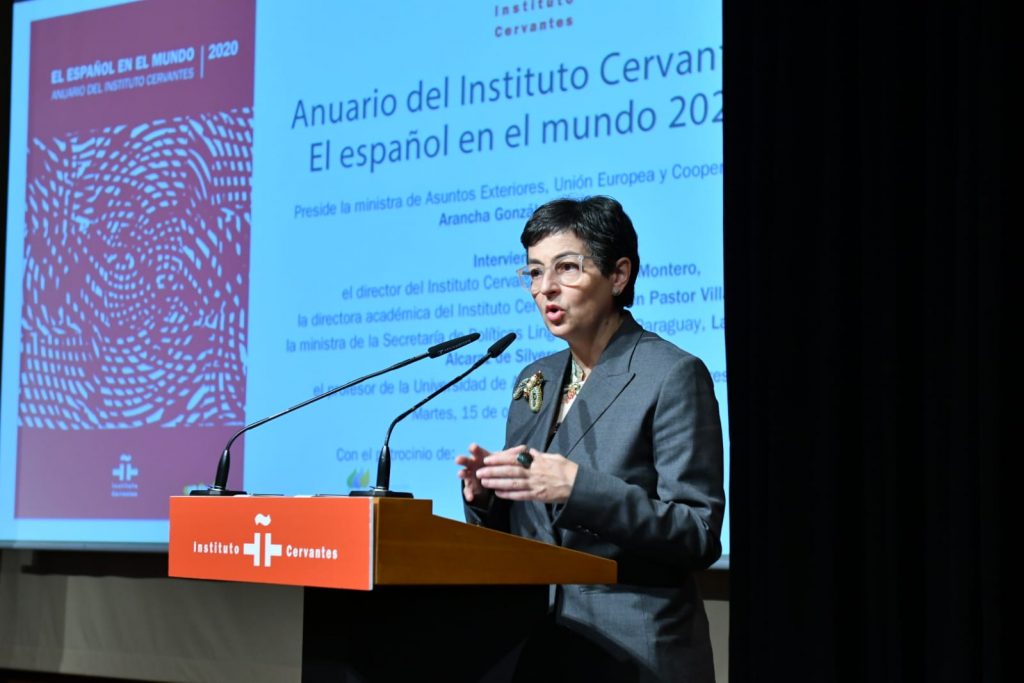
These are some of the most outstanding data of the «Yearbook 2020 Spanish in the World 2020» presented today by the Minister of Foreign Affairs, Arancha González Laya, and the director of Instituto Cervantes, Luis García Montero. The academic director of Cervantes, Carmen Pastor; the Minister of Language Policies of Paraguay, Ladislaa Alcaraz, and professor David Fernández Vítores, author of the 2020 report Spanish, a living language.
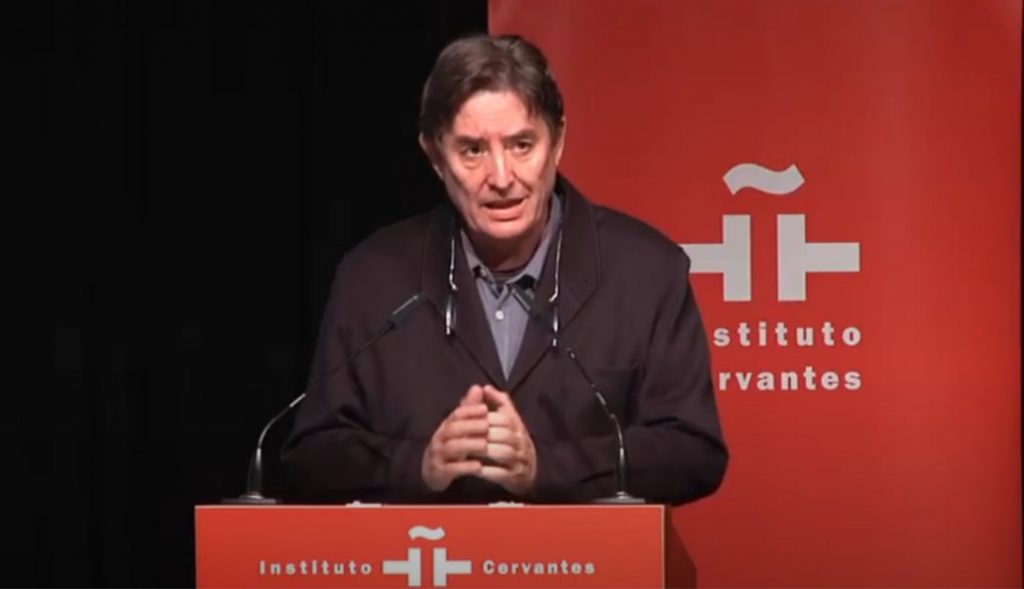
The most significant figures for 2020 are the following:
• Almost 489 million people speak Spanish as their mother tongue, six million more than last year.
• The group of potential users of Spanish (native Spanish speakers plus users of limited competence and foreign language learners) exceeds 585 million, five million more than in 2019. They represent 7.5% of the world population.
• Spanish is the second mother tongue in the world by number of speakers, after Mandarin Chinese.
• It is the third language in a global tally of speakers (native proficiency + limited proficiency + Spanish students), after English and Mandarin Chinese.
• In the last decade (since this annual report was written) the positive evolution of Spanish has been confirmed:
◦ The number of potential speakers has grown more than 30%.
◦ The group of students as a foreign language has expanded by almost 60%.
◦ The role of Spanish is reinforced to the detriment of more established languages such as French and German.
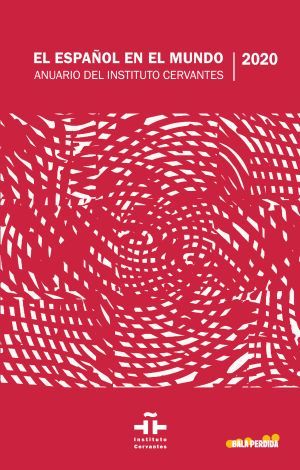
• The number of Spanish speakers will continue to grow in the coming decades. In the second half of the century, its relative weight will begin to decrease progressively.
• In the year 2100, 6.3% of the world’s population will be able to communicate in Spanish.
• More than 22 million students study Spanish as a foreign language in 2020. Specifically, a total of 22,329,275.
585 millones de personas hablan español, de los que 489 millones (seis más que hace un año) son nativos
Más de 585 millones de personas (el 7,5% de la población mundial) hablan español, cinco millones más que hace un año. Casi 489 millones son hispanohablantes nativos (seis millones más que en 2019), y más de 22 millones lo estudian como lengua extranjera. Estos datos confirman la evolución positiva del español en la última década, en la que los hablantes potenciales han crecido más de un 30% y lo estudian un 60% más que en 2010.
Además, el español es la segunda lengua materna por número de hablantes tras el chino mandarín, y la tercera lengua en un cómputo global de usuarios después del inglés y del chino mandarín. En internet es la tercera más utilizada: el 7,9% de los usuarios se comunica en español. Es el segundo idioma, detrás del inglés, en publicación de textos científicos. Más de 907.000 extranjeros vienen cada año a estudiarlo, y eligen España por tres motivos principales: la oferta cultural, el clima y el atractivo del país.

Son algunos de los datos más destacados del Anuario 2020 El español en el mundo que hoy presentan la ministra de Asuntos Exteriores, Arancha González Laya, y el director del Instituto Cervantes, Luis García Montero. También intervienen la directora académica del Cervantes, Carmen Pastor; la ministra de Políticas Lingüística de Paraguay, Ladislaa Alcaraz (a distancia), y el catedrático David Fernández Vítores, autor del informe 2020 El español, una lengua viva.
El libro, de casi 500 páginas, hace el número 21 de esta publicación de referencia sobre demolingüística del español y sobre su situación y proyecciones de futuro. Coeditado con Bala Perdida, cuenta con el patrocinio de la Fundación Iberdrola España.
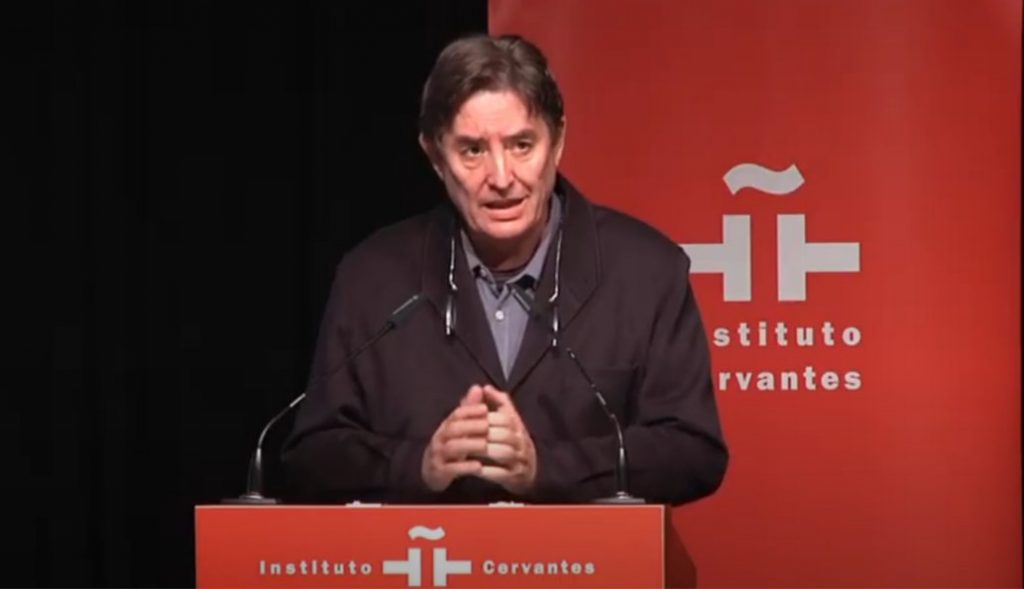
A continuación se resumen los contenidos.
- EL ESPAÑOL EN EL MUNDO 2020
El español: una lengua viva. Informe 2020,elaborado por David Fernández Vítores en colaboración con el Instituto Cervantes,presenta los datos actualizados sobre la lengua española en todos los ámbitos: demografía, enseñanza y aprendizaje como lengua extranjera, internet y redes sociales, ciencia y cultura, influencia internacional, valor económico y presencia diplomática.
Las cifras más significativas del año 2020 son las siguientes:
- Casi 489 millones de personas tienen el español como lengua materna, seis millones más que el pasado año.
- El grupo de usuarios potenciales de español (hispanohablantes nativos más usuarios de competencia limitada y aprendices de lengua extranjera) supera los 585 millones, cinco millones más que en 2019. Suponen el 7,5% de la población mundial.
- El español es la segunda lengua materna del mundo por número de hablantes, tras el chino mandarín.
- Es la tercera lengua en un cómputo global de hablantes (dominio nativo + competencia limitada + estudiantes de español), después del inglés y del chino mandarín.
- En
la última década (desde que se realiza este informe anual) se
confirma la evolución positiva del español:
- El número de hablantes potenciales ha crecido más de 30%.
- El grupo de estudiantes como lengua extranjera se ha ampliado en casi un 60%.
- Se refuerza el protagonismo del español en detrimento de lenguas más asentadas como el francés y el alemán.
- El número de hispanohablantes seguirá creciendo en las próximas décadas. En la segunda mitad de siglo, su peso relativo empezará a disminuir de manera progresiva.
- En el año 2100, el 6,3% de la población mundial podrá comunicarse en español.
- Más de 22 millones de alumnos estudian español como lengua extranjera en 2020. En concreto, un total de 22.329.275.
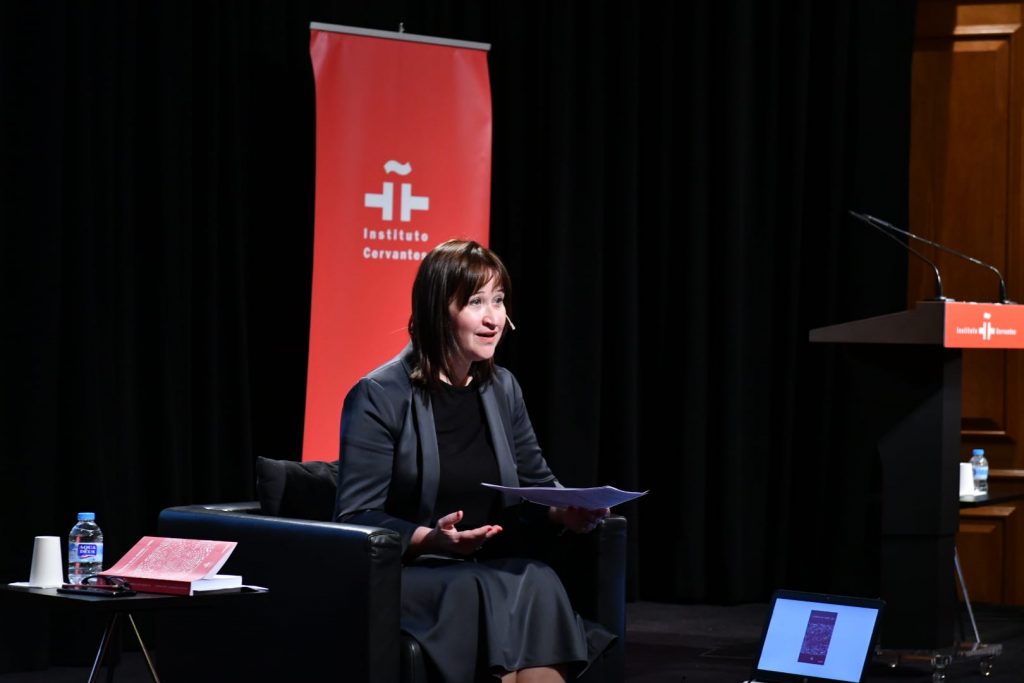
Peso económico del español:
- Los hablantes de español tienen un poder de compra conjunto alrededor del 9% del PIB mundial.
- En la suma de países donde el español es el idioma oficial se genera casi el 7% del PIB mundial.
- El español es el segundo idioma más relevante en el sector del turismo idiomático.
Presencia internacional del español:
- El español es la segunda lengua más importante en el ámbito internacional.
- Es el tercer idioma más usado en la Organización de las Naciones Unidas.
- Es el cuarto idioma en la Unión Europea; la salida del Reino Unido beneficia al peso relativo del español en la UE.
- Es también la lengua más utilizada en los organismos de integración americana e iberoamericana.
- Sin embargo, el aumento del empleo del inglés en los diversos organismos internacionales resta protagonismo al español y a las otras lenguas oficiales.

Situación en Estados Unidos:
- Más de 62 millones de estadounidenses (el 18,7% de la población total) son de origen hispano.
- El 71% utilizan el español en el entorno familiar y el 94 % se identifican como hispanos.
- En las elecciones presidenciales de 2020 serán la minoría étnica más representada.
- El español es el idioma más estudiado en todos los niveles de enseñanza.
- En 2060, Estados Unidos será el segundo país hispanohablante del mundo, después de México. El 27,5% de la población estadounidense será de origen hispano.
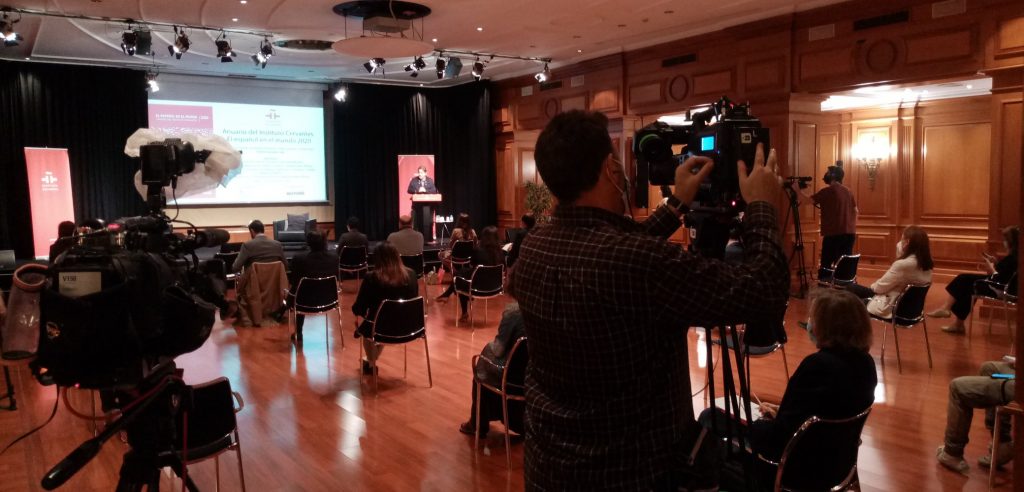
Divulgación científica en español:
- El español es la lengua en la que más textos de carácter científico se publican después del inglés.
- El 4,3% de la producción científica mundial tiene su origen en algún país de habla española.
- Casi el 60% de los documentos científicos del ámbito hispanohablante se publican actualmente en España.
- El 72% de la producción científica en español se reparte entre tres áreas temáticas principales: ciencias sociales, ciencias médicas y artes y humanidades.
- Dado que la comunidad científica utiliza el inglés como lengua vehicular, en este ámbito el español no goza de la proyección internacional de otras disciplinas como la literatura, la música o la pintura.

Internet:
- El español es la tercera más utilizada en la red: el 7,9% de los usuarios se comunica en español.
- En la mayoría de las plataformas digitales (Facebook, LinkedIn, Twitter, Wikipedia…) el español es la segunda lengua más utilizada.
- La comunidad hispana estadounidense prefiere consumir y crear contenidos digitales en español en lugar de en inglés.
12 de Octubre | Celebración de la Fiesta Nacional de España
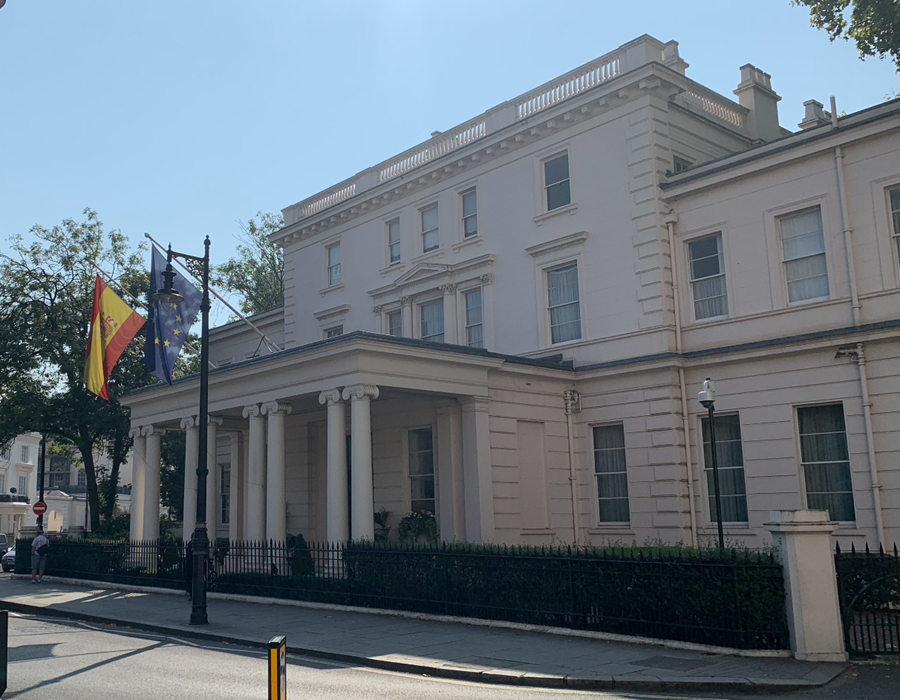
Con motivo de la celebración de la Fiesta Nacional el próximo lunes 12 de octubre, la Embajada de España en Londres les invita a seguir las actividades virtuales a lo largo del día.
Programa Oficial Puede seguir las actividades haciendo click aquí
12:00
Palabras del Embajador de España para el Reino Unido, Excmo. Sr. D. Carlos Bastarreche Sagües Himno Nacional y Brindis
12:15
Vídeo oficial del Ministerio de Asuntos Exteriores, Unión Europea y Cooperación
12:30
“Rediscovering the Alhambra”, por Natalia Muñoz-Rojas, Asistente de Conservación en la Wallace Collection
“Increasing SARS-CoV-2 diagnostics capacity”, por Rocío Martínez Núñez, Investigadora en King’s College
13:05
“Spanish Researchers in Britain”, con la participación de los investigadores J.A. Carrillo de la Plata, D. Pulido Gómez, A. Jaramillo, R. Martínez Núñez y de Joan Pons Planas, sanitario NHS
“Philip V’s Rococo Interiors at la Granja de San Idelfonso”, por Félix Zorzo, Asistente de Conservación de la Wallace Collection * * *
Celebración desde el Teatro Cervantes de Londres de un programa en directo de música clásica española e iberoamericana, presentado por el Director del Instituto Cervantes en Londres, D. Ignacio Peyró.
Conéctese haciendo click aquí
19:00
“La guitarra española: música de España y Latinoamérica”, música de Gaspar Sanz, Dionisio Aguado, Fernando Sor, Manuel Ponce, Alberto Ginastera y Astor Piazzolla interpretada por Johan Löfving.
Eurolis Online Seminar 2020: How can libraries play a positive role in crisis?
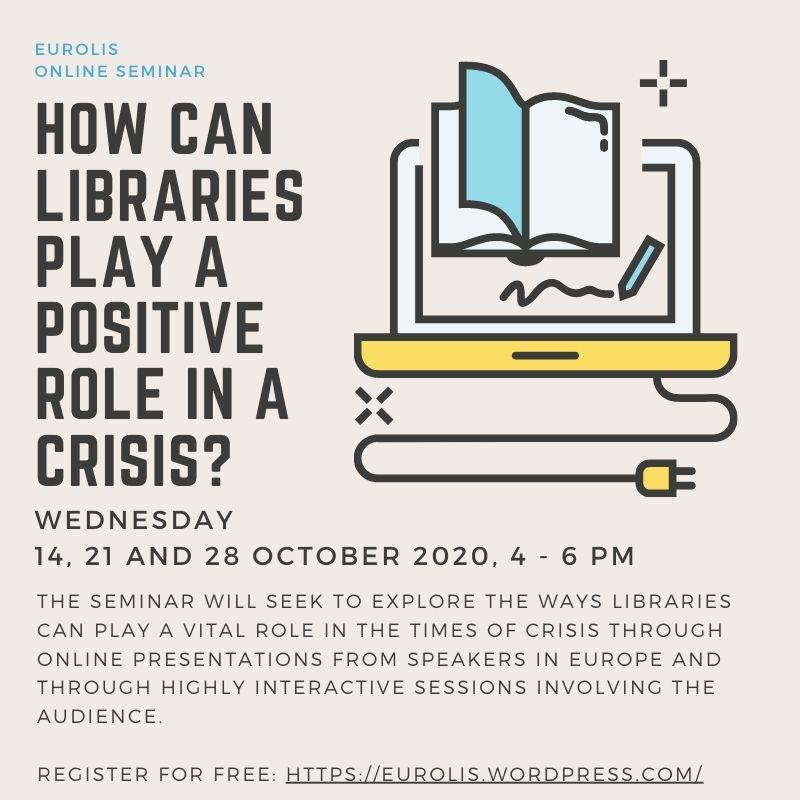
An online conference held over 3 weeks
Wednesdays 14, 21 and 28 October 2020, from 4 to 6pm
Choose your slot(s) & register for free
The seminar will seek to explore the ways libraries can play a vital role in the times of crisis through online presentations from speakers in Europe and through highly interactive sessions involving the audience.
The breadth of the chosen topic is expected to cover the themes of health epidemic, environmental issues/catastrophe or socio-economic/wartime crisis involving the migration or subjugation of large numbers of people and the role a library or group of libraries has played in alleviating the situation.
Spanish Speaker | For What Kinds of Crises are Libraries Useful for? by Lluis Anglada, as part of the SESSION 2| Wednesday 21st Octobre | 4.00pm (GMT) REGISTER
We will examine the measures taken by Spanish libraries in the recent Covid-19 crisis and also those taken in the 2008 economic crisis. In these cases, but also in environmental catastrophes, libraries can help, but this is not their role.
What does crisis mean? There are different kinds of crises; these can be big or small, short-term or long-term and often they will not affect all people in the same way.
In confusing and troubling times, libraries have to re-examine why they were created; as spaces where the public could access information. Meanwhile, this necessity for libraries is disappearing given the accelerated change of society where information can be distributed rapidly across the globe.
Globalisation and sustainability are new challenges (or crises) that people have to cope with. Are these challenges related in some way to the function of a library?
In the talk, we will try to characterise what kind of crises libraries are facing and how libraries and librarians have to react in order to continue being useful and relevant.
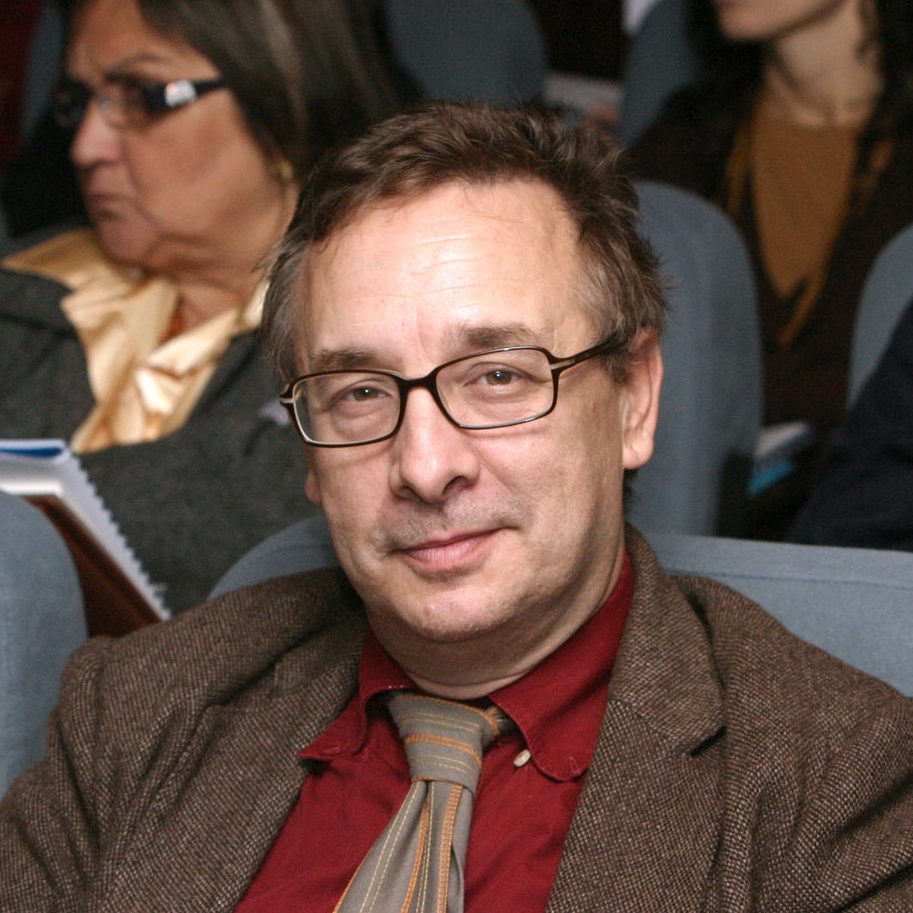
Lluís Anglada, currently is Director of Open Science in the CSUC (Consortium of Services for the Universities of Catalonia); Previously, he was the director of the CBUC (Consortium of Catalan Academic Libraries) and director of the Catalonia Technical University Libraries. He has been a member of several professional boards at the national and international level (SPARC Europe, LIBER, OCLC’s Global Council) and also of publisher advisory councils (ProQuest, Wiley, Nature…) He has published about 40 articles and book chapters. Founder of the blogs BDig y Blok de Bid.
For more information, please visit:
VII Festival de cine español de Edimburgo: Programa escolar
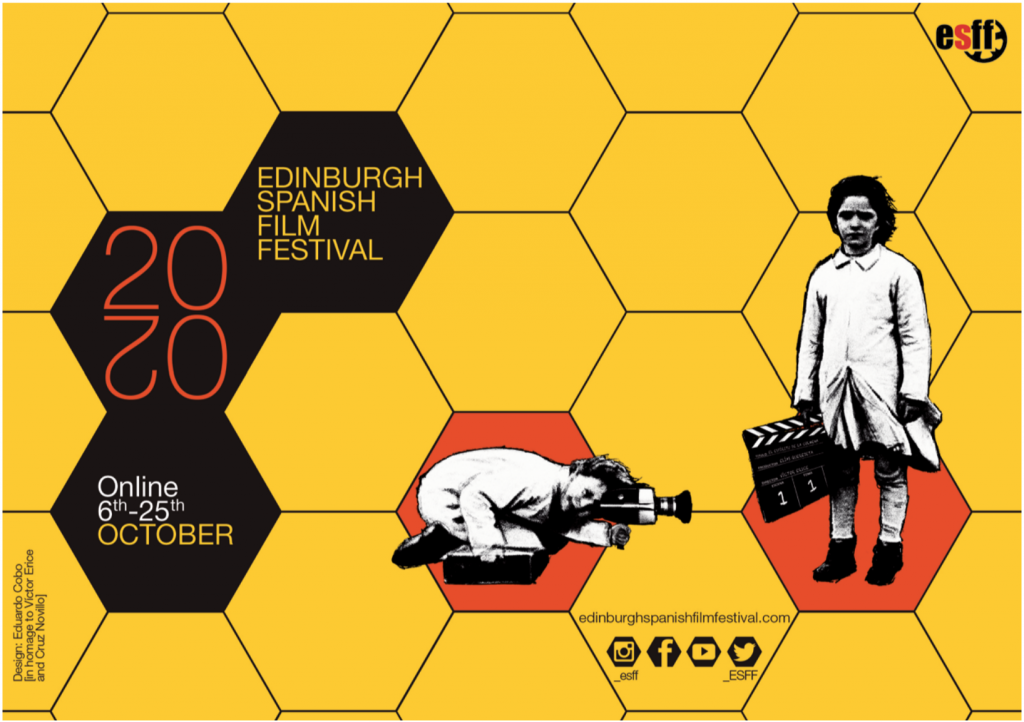
Vuelve el Festival de Cine Español de Edimburgo e incluye un Programa Escolar dirigido a estudiantes de “Spanish Learning”.
Debido al COVID-19, el formato será en línea y la película estará disponible durante 48 horas, a través de un enlace enviado a los profesores, que les permitiría acceder a ver las películas en clase dentro de un tiempo establecido.
En esta edición, las películas del Programa Escolar son:
- Los Futbolísimos (P7-S2)
- Pakete, Helena y sus compañeros de colegio se meten en todo tipo de aventuras en las que su ingenio y su amistad serán puestos a prueba. Todo para descubrir el misterio que podría acabar con su equipo de fútbol y con la continuidad de la pandilla. ¿Son víctimas de una conspiración o es todo fruto de la casualidad? Ha llegado el momento de hacer un pacto secreto y crear Los Futbolísimos con un objetivo claro: resolver el enigma y poder mantenerse juntos.
- Una vez más para (S3-S6)
- Abril regresa a su casa para el funeral de su abuela y al reencontrarse con su antigua vida empieza a pensar en recuperar todo lo que dejó atrás cuando se marchó hace cinco años al extranjero en busca de un futuro. Director: Guillermo Rojas.
Este programa para estudiantes de español les brinda la oportunidad de mejorar sus habilidades lingüísticas y su conciencia cultural. El ESFF también ha preparado un conjunto de actividades posteriores al visionado, disponibles para que los estudiantes profundicen en las películas y practiquen el vocabulario.
Más información, programa completo y entradas: www.edinburghspanishfilmfestival.com


